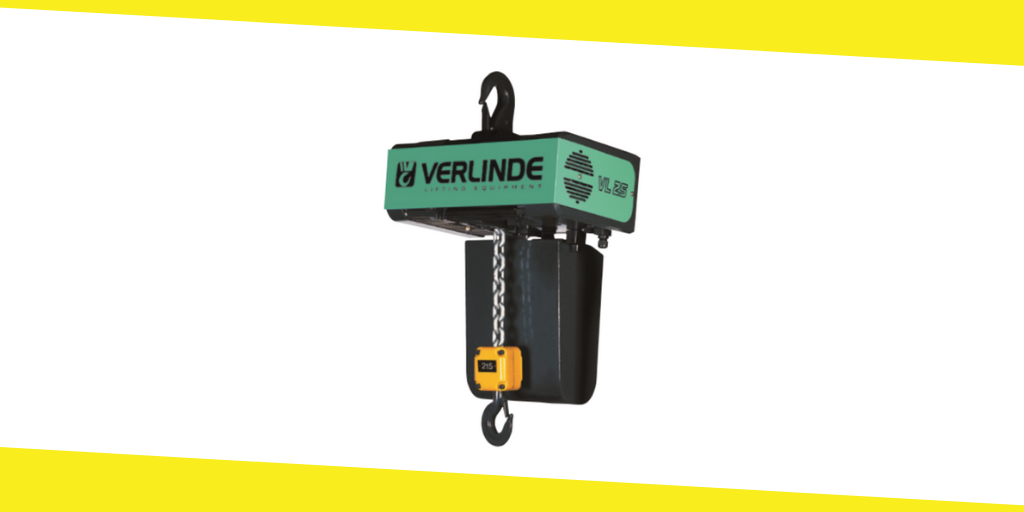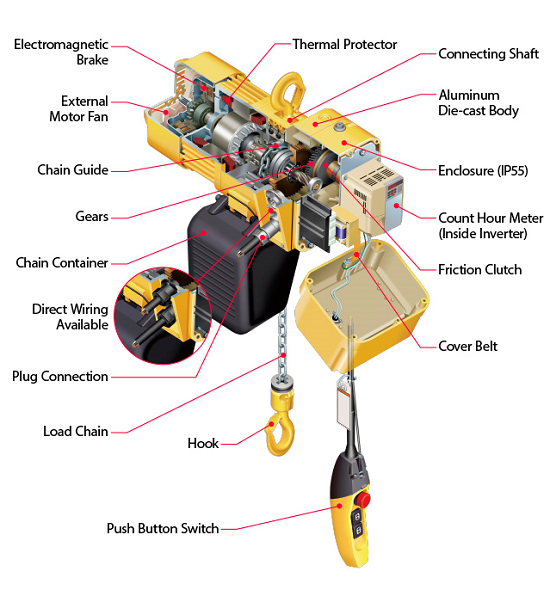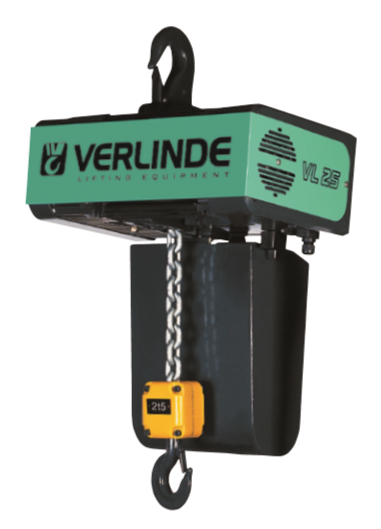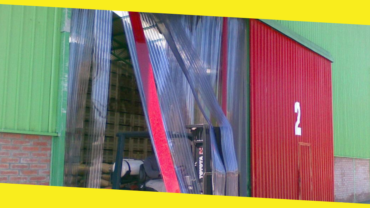Electric Hoists an Essential Piece of Equipment in the Industrial Workplace
This post was last updated on September 11th, 2019

Hoists are used to lift, move and lower objects in a variety of settings such as warehouses, ports, factories, mills, etc. There are numerous types of hoists such as manual chain hoists, wire rope hoists, scaffolding hoists, gantry hoists, etc. If you want the power of electricity though, the way to go is to invest in electric hoists!
Electric hoists can be attached to gantry cranes, Jib cranes and overhead cranes for even more flexibility of use and for specialist operations. Here we discuss electric hoists and why they are such an essential piece of equipment to use within the workplace, especially within industrial settings.
Contents
ToggleWhat are Electric Hoists?
Hoists are nothing new, humans have used hoists for thousands of years with hoists almost certainly being used in the building of the pyramids and the Rome Colosseum as just two examples. Electric hoists are somewhat newer with the first models being developed in the 1880s.
Hoists have always been used to manipulate loads, which would otherwise be impossible for humans to move, lift or lower. Electric hoists were created because of a) the availability of electricity and b) the need to increase the load capabilities of hoisting equipment.
The concept of an electric hoist is simple. Once they are connected to an electricity source, they have the ability to move, lift or lower various objects as required by the operator. Typically, the operator is safely and securely located some distance away from the load to absolutely minimise any personal injury risk. From this distance, the operator can move, release and attach loads to the hoist.

The Kito ER electric hoist series have impressive capacities of up to 20,000 kg.
Benefits and advantages of using electric hoists
When faced with the need for heavy load lifting and moving, electric hoists will typically receive early consideration as investment. Some of the main benefits and advantages of using electric hoists include:
- Choice – There are hundreds of different electric hoist manufacturers all of whom manufacture hoists of different shapes and sizes to suit a range of requirements. So, the perfect hoist can be bought to suit the space you have available and weights you need to lift, etc.
- Large load capacities – As with any hoists, they enable the lifting of large loads, which would otherwise be impossible manually. Electric hoists though go beyond other hoist types and can lift even larger load capacities. For example, the Yale CPE range lifts loads of up to 10,000kg and the Kito ER series lifts loads of up to 20,000kg
- Less “wear and tear” – In general, electric hoists have far fewer moving parts and will incur less wear and tear than other hoist types. If maintained well and inspected/serviced regularly electric hoists can expect to reach a long lifetime of use
- Lower operating costs – Electric hoists enable lower operating costs, in ways such as:
- Reduced injuries – there will be fewer staff injuries, sick days and compensation pay-outs when using electric hoists
- Speed – as we discuss below there are speed savings and “time is money”
- Staffing – less staff are required to man electric hoists, saving on staff costs
- Quietness of operation – When compared to manual and hydraulic hoists, electric hoists operate much more quietly. This makes for a much more enjoyable workplace, which is more comfortable for employees. Electric hoists when used in the long-term, will considerably protect the ears and hearing of employees.
- Safety – Electric hoists are always designed with quality and safety in mind. This is mandated around the world by various health and safety laws applying to lifting operations. When buying electric hoists and using sound operating procedures safety in the workplace is maximised. In addition, most brands of electric hoists have inbuilt safety features such as:
- Emergency stop control – typically a button (or other control), which stops the hoist in emergency situations
- Overload protection – to protect excess loads from even being attempted to manipulate
- Travel limiters – restricts the travel (movement) to the left/right within agreed parameters
- Speed – Electric hoists are extremely fast and proficient at the work they do. This is especially beneficial in fast-moving environments where loads need moving continuously. It is certainly true to say that speed is a major reason for buying an electric hoist
- Versatility of operation – Unlike other types of hoists, electric hoists can be bought, which load both vertically and horizontally. The exact hoist required can be bought to suit your particular circumstances. More about Electric Hoists here www.etihadcranes.com/
products/electric-chain-hoist- entertainment
Buying ATEX certified hoists
Various legislation around the world applies to the use of electric hoists in explosive environments. When using electric hoists, they can create sparks during operation, which will ignite with gases, oxidizing agents and dust particles in certain environments.
With this in mind, if the working environment could be explosive or is explosive in nature then an ATEX certified electric hoist will need to be bought. ATEX is an abbreviation of (ATmosphères EXplosibles). Certain environments such as drilling or the oil and gas industry, in particular, need ATEX hoists for day to day hoisting.

The Verlinde VL electric hoist which is available with an ATEX version
Lifting applications
There are many different types of lifting applications for which an electric hoist can be used, here are just a few examples:
- Engines – lifting engines out of/back into vehicles, especially in garages and service centres
- Event venues – concert halls, theatres, etc. will benefit from being able to move stage around with electric hoists
- Manufacturing lines – as an integrated process within a manufacturing production line
- Mining operations – are perfect in mining for lifting and lowering ore and materials
- Offshore settings – electric hoists are popular in the oil and gas industry as well as in marine applications
- Sawmills – electric hoists are ideal for moving and lifting logs within a sawmill
- Shipping containers – as with other types of hoists, electric hoists are ideal for moving shipping containers, usually when attached to a crane. This is particularly popular in ports
- Warehousing – lifting and moving stock (especially in boxes) around a warehouse
Is it time to buy an electric hoist?
We hope you have enjoyed this article about electric hoists and now agree that they are an essential part of any workplace, which requires the lifting, lowering and moving of heavy objects. Why not consider buying one for your workplace and take the strain out of lifting. Get more about electric hoist https://www.
Recommended For You
Perks of Using Door Curtains for Warehouses
Most Inside
Most Inside offers high-quality recommendations and valuable updates to enhance all aspects of your life, providing premium guidance and enriching experiences.




